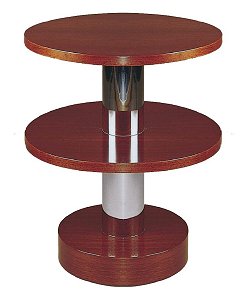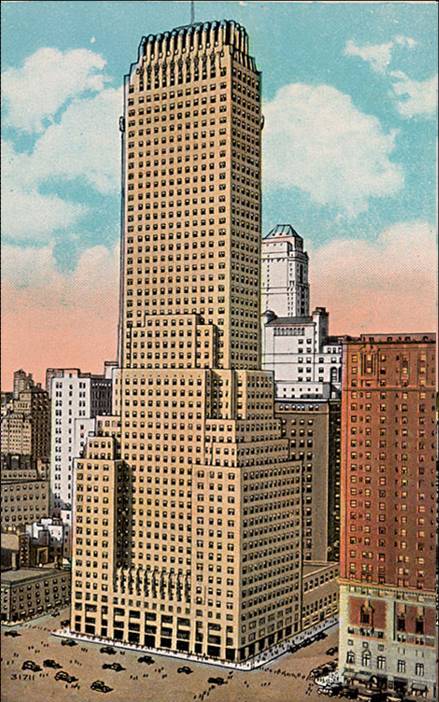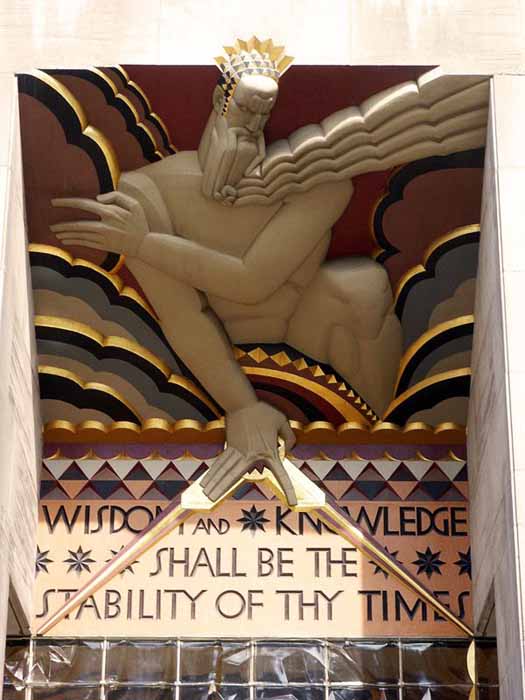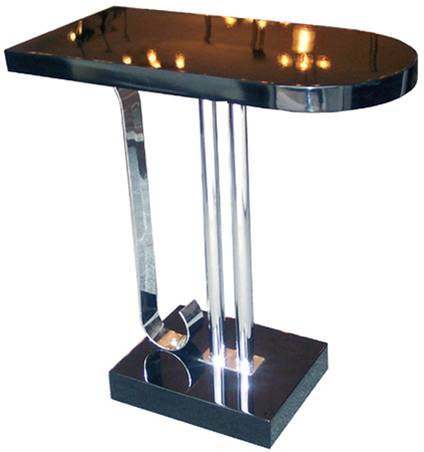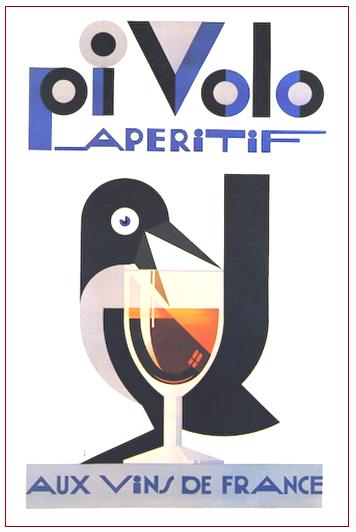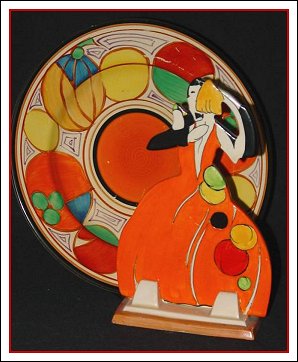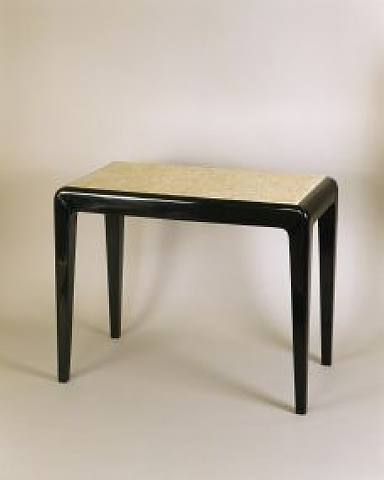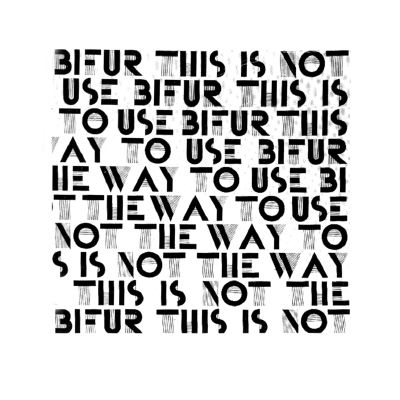Historia Del Diseño Industrial - Tema 4. Art Deco

- 1.
Algunas de las principales inspiraciones del Art Deco son...
- A.
El arte étnico africano y azteca
- B.
El jazz
- C.
Los diseños de moda
- D.
El simbolismo
- E.
Los Ballets Rusos
Correct Answer(s)
A. El arte étnico africano y azteca
B. El jazz
C. Los diseños de moda
E. Los Ballets RusosExplanation
The Art Deco movement drew inspiration from various sources, including African and Aztec ethnic art, jazz music, fashion designs, and the Ballets Russes. These influences can be seen in the geometric shapes, bold colors, and streamlined forms that are characteristic of Art Deco design. African and Aztec art provided a rich source of patterns and motifs, while jazz music and the Ballets Russes brought a sense of energy and dynamism to the movement. Fashion designs also played a significant role in shaping the aesthetic of Art Deco, with designers incorporating sleek and glamorous elements into their creations.Rate this question:
-
- 2.
¿Cuál es la premisa básica de este movimiento?
- A.
El empleo de formas simples y geométricas.
- B.
La búsqueda de tonos y colores novedosos.
- C.
La preeminencia de la forma sobre la función.
- D.
No existe como tal, se trata de una corriente expresiva fruto de una amalgama de tendencias.
Correct Answer
D. No existe como tal, se trata de una corriente expresiva fruto de una amalgama de tendencias. -
- 3.
El Art Deco muestra una preferencia por tonos brillantes, dorados y plateados.
- A.
Verdadero
- B.
Falso
Correct Answer
A. VerdaderoExplanation
El Art Deco es un estilo artístico que se caracteriza por su uso de colores brillantes y metálicos, como el oro y la plata. Esta preferencia por tonos brillantes y metálicos se refleja en la arquitectura, el diseño de interiores y las obras de arte del período Art Deco. Por lo tanto, la afirmación de que el Art Deco muestra una preferencia por tonos brillantes, dorados y plateados es verdadera.Rate this question:
-
- 4.
INVESTIGACIÓN: En esta época se desarrolla un material de amplio uso, la baquelita, el primer plástico termoestable. ¿Cuál es su composición?
Correct Answer
Fenol y formaldehído
Formaldehído y fenolExplanation
The correct answer is "Fenol y formaldehído". Baquelita, el primer plástico termoestable, se compone de fenol y formaldehído.Rate this question:
- 5.
Leer el texto que figura en este vínculo. ¿En qué año recibe esta corriente el nombre de Art Deco?
Correct Answer
1966 - 6.
¿Qué figura del Art Deco francés representa claramente el empleo de formas angulosas en sus diseños, frecuentados por "la mujer moderna"?
Correct Answer
Tamara de Lempicka - 7.
INVESTIGACIÓN: El autor del conjunto de la imagen es...
Correct Answer
Edouard-Marcel Sandoz
Sandoz - 8.
Comentar qué características propias del Art Deco se aprecian en la escultura de la imagen:
- 9.
Una característica particular de los muebles Art Deco es
- A.
La presencia de bisagras desproporcionadas.
- B.
El empleo de materiales exóticos.
- C.
El uso de pieles de animales orientales, como el tejón mogol.
- D.
El gusto por los remates plomados.
Correct Answer
B. El empleo de materiales exóticos.Explanation
La característica particular de los muebles Art Deco es el empleo de materiales exóticos. Esta corriente artística y de diseño se caracterizó por utilizar materiales inusuales y lujosos, como el marfil, la piel de serpiente, el carey y la madera de ébano, entre otros. Estos materiales exóticos le daban a los muebles un aspecto sofisticado y glamoroso, reflejando la opulencia y el lujo de la época.Rate this question:
-
- 10.
En esta imagen se muestra una mesa inspirada en el estilo de Ruhlmannn. ¿Qué características propias de los muebles Art Deco se observan?
- 11.
En esta época se emplean en diversas disciplinas técnicas decorativas que realzan la apariencia de los objetos. Citar una de ellas.
Correct Answer
Lacado
Cáscara de huevo
Pate-de-verreExplanation
Las técnicas decorativas mencionadas en la respuesta correcta son el lacado, la cáscara de huevo y el pate-de-verre. El lacado es una técnica que consiste en aplicar varias capas de barniz o laca sobre una superficie para darle un acabado brillante y duradero. La cáscara de huevo es una técnica en la que se utilizan fragmentos de cáscara de huevo para decorar objetos, creando un efecto único y texturizado. El pate-de-verre es una técnica de vidrio en la que se utilizan fragmentos de vidrio triturados y fundidos para crear diseños y formas decorativas. Estas técnicas se utilizan en diferentes disciplinas para embellecer objetos y realzar su apariencia.Rate this question:
- 12.
¿En qué materiales se fabricaban originalmente las esculturas "crisoelefantinas"?
Correct Answer
Oro y marfil
Marfil y oro - 13.
¿Quiénes son los autores de estos diseños? Separar sólo por guiones, sólo apellidos. (Ej.: Martínez-Gómez-Gutiérrez-Pérez-López)
Correct Answer
Cassandre-Ruhlmann-Follot-Sandoz-Marinot - 14.
El principal foco de actividad Art Deco en Estados Unidos es Nueva York. Arquitectónicamente, el símbolo por excelencia de esta época es...
Correct Answer
el rascacielosExplanation
The correct answer is "el rascacielos" (the skyscraper). The question states that the main focus of Art Deco activity in the United States is New York. Architecturally, the symbol of this era is the skyscraper, which is a tall building with a distinctive design. The Art Deco movement embraced modernity and the skyscraper became a prominent feature of the urban landscape during this time.Rate this question:
- 15.
INVESTIGACIÓN: El diseño de la imagen es obra de...
Correct Answer
Donald Deskey
DeskeyExplanation
The correct answer is Donald Deskey. Deskey is a renowned designer known for his work in various fields including industrial design, interior design, and graphic design. He is credited with creating the design of the image in question.Rate this question:
- 16.
El rascacielos de la figura es el...
- A.
First National City Trust Co
- B.
Chrysler Building
- C.
Rockefeller Centre
- D.
Chanin Building
Correct Answer
D. Chanin BuildingExplanation
The correct answer is the Chanin Building. The question is asking about the skyscraper depicted in the figure, and out of the given options, the Chanin Building is the correct choice.Rate this question:
-
- 17.
INVESTIGACIÓN: ¿En qué consiste la técnica pate-de-verre?
- 18.
El mural de la imagen se puede contemplar en el edificio...
- A.
Del Daily Express.
- B.
Hoover.
- C.
Strand Palace.
- D.
De la BBC.
Correct Answer
A. Del Daily Express. -
- 19.
La mesa de la imagen es un diseño de...
- A.
Dominique
- B.
Ruhlmann
- C.
Deskey
- D.
Dufrene
Correct Answer
A. DominiqueExplanation
Dominique is the correct answer because the question is asking about the designer of the table in the image. The other options (Ruhlmann, Deskey, and Dufrene) are not relevant to the question and do not provide any information about the table's designer.Rate this question:
-
- 20.
INVESTIGACIÓN: El edificio al que pertenece el friso de la imagen está plagado de esculturas con referencias mitológicas. Para el diseño de esta decoración se requirió incluso la colaboración de un filósofo, llamado...
Correct Answer
Hartley Burr Alexander - 21.
La mesa de la imagen es un diseño de
- A.
Eileen Gray
- B.
Emile-Jacques Ruhlmann
- C.
Walter von Nessen
- D.
Pierre Legrain
Correct Answer
C. Walter von NessenExplanation
The correct answer is Walter von Nessen. Walter von Nessen was a designer known for his modernist furniture designs. Although the question does not provide any specific details about the image of the table, it can be inferred that the table in the image is a design by Walter von Nessen based on his reputation as a designer and his contribution to modernist furniture.Rate this question:
-
- 22.
¿Cuál de los siguientes muebles presenta rasgos claramente Art Deco?
- A.
El tercero
- B.
El primero
- C.
El cuarto
- D.
El segundo
Correct Answer
A. El terceroExplanation
The third furniture piece clearly exhibits Art Deco characteristics.Rate this question:
-
- 23.
El cartel de la imagen presenta el estilo típico de... (apellido)
Correct Answer
CassandreExplanation
The correct answer is Cassandre because the image in the poster reflects the typical style associated with the artist Cassandre. Cassandre was known for his bold and innovative graphic design, characterized by geometric shapes, strong typography, and a modern aesthetic. The image in the poster likely exhibits these characteristics, leading to the identification of Cassandre as the artist.Rate this question:
- 24.
El diseño de la imagen es obra de...
Correct Answer
Clarice CliffExplanation
Clarice Cliff is the artist responsible for the design of the image.Rate this question:
- 25.
INVESTIGACIÓN: Cuenta una anécdota que <!--[if !ppt]--><!--[endif]-->la carrera de Elsa Schiaparelli empezó al coincidir con el diseñador Paul Poiret en un desfile que éste organizaba. Ella se probó una prenda que él le regaló. ¿Qué prenda era ésa?
Correct Answer
Un abrigo de terciopeloExplanation
Elsa Schiaparelli's career started when she coincidentally attended a fashion show organized by designer Paul Poiret. During the event, she tried on a garment that he gifted her, which happened to be a velvet coat. This experience marked the beginning of Schiaparelli's journey in the fashion industry.Rate this question:
- 26.
La mesa lacada de la imagen es obra de...
Correct Answer
Jean DunandExplanation
The correct answer is Jean Dunand because the question states that the lacquered table in the image is the work of someone, and the name given as the answer is Jean Dunand. Therefore, it can be inferred that Jean Dunand is the artist who created the lacquered table in the image.Rate this question:
- 27.
INVESTIGACIÓN: La imagen muestra una tipografía de la época. Fue diseñada por...
Correct Answer
CassandreExplanation
The correct answer is Cassandre. The question is asking about the designer of the typography shown in the image. Cassandre is a well-known designer who is famous for his innovative and influential typography designs during his time.Rate this question:
- 28.
El Fauvismo, fuente de inspiración del Art Deco, propone el dominio del color sobre la forma
- A.
Verdadero
- B.
Falso
Correct Answer
A. VerdaderoExplanation
The statement is true. El Fauvismo, an art movement that emerged in the early 20th century, emphasized the use of bold and vibrant colors to express emotions and create powerful visual impact. This focus on color over form influenced the development of Art Deco, a design style that became popular in the 1920s and 1930s. Art Deco also embraced vibrant colors and geometric shapes, reflecting the influence of El Fauvismo. Therefore, it can be concluded that El Fauvismo was indeed a source of inspiration for Art Deco, making the answer "Verdadero" (True).Rate this question:
-
Quiz Review Timeline +
Our quizzes are rigorously reviewed, monitored and continuously updated by our expert board to maintain accuracy, relevance, and timeliness.
-
Current Version
-
Mar 20, 2023Quiz Edited by
ProProfs Editorial Team -
Jan 22, 2009Quiz Created by
Jalcaide
 Back to top
Back to top







